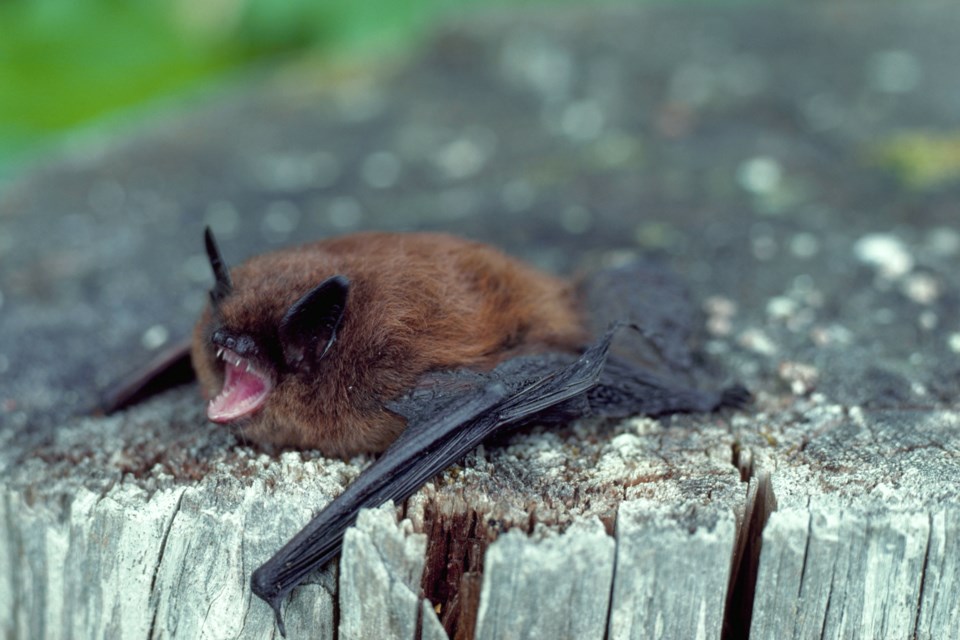The discovery of signs that bats in Alberta may be infected with the fatal white-nose syndrome is raising fears there will be a corresponding rise in the agricultural pests the bats feed on.
Researchers in Alberta found guano infected with white-nose syndrome, or WNS, in 2022. It provides another indication that the fungal infection first seen in eastern North America in the early 2000s is continuing to move west.
The first bat in Saskatchewan with WNS was confirmed in 2012, leaving British Columbia as the only province free of indications of the disease. WNS causes white fungal growth around bats’ muzzles, which can also spread across its wings and ears. The infection hits bats during hibernation and can kill off 80 percent or more of a bat colony.
The death rate among bats could have corresponding effects on insect pests. Bats feed on wheat midge and diamondback moths, said Paul Muyres, agronomist with Solid Ground Solutions.
“Their populations will escalate due to the fact that we don’t have natural predation by the bats,” he said. “We are essentially then forced to use insecticide to control those pests and both of them are problematic in wheat and canola.”
Alberta’s little brown bat populations are especially at risk from the infection, which can diminish their ability to hibernate and cause premature death.
But the economic fallout of a mass die-off of the bats in Canada is not fully understood, said Muyres.
“There is lots of data supporting massive amount of losses in the (United States),” he said, adding costs to American producers are in the billions of dollars in direct and indirect costs.
Efforts for producers to stop steep declines in bat populations must include maintaining current bat habitats and increasing their availability, said Muyres.
“If we can preserve a lot of bat habitat, we give the bats a lot more area to live and grow and that will maybe stem the tide slightly,” he said.
Keeping away from bat hibernation sites is also critical, he added, because the fungus can be spread by humans between different roosting spots.
Alberta has closed Cadomin and Wapiabi caves to the public, two known caves that host bats. The province has also listed little brown bats and northern myotis bats as endangered in recent years as preventive measures.
Muyres said Alberta will need to take more preventive measures to combat the spread of WNS, including adopting practices used in neighbouring jurisdictions, which have found success in inoculating colonies with probiotics.
Spreading the message that bats are a protected species is also important, he said.
He said there is not a full understanding of the impact bats have on agricultural pests in Western Canada.
“We don’t know how much (bats) take out. We will know if we don’t have bats because all of a sudden, we will see those insect numbers rise,” Muyres said, acknowledging more research is necessary to prove the correlation.
Bat researchers confirmed earlier this year the primary locations in Alberta where WNS was detected in bat guano were along the Red Deer River near Dinosaur Provincial Park located north of Brooks.


